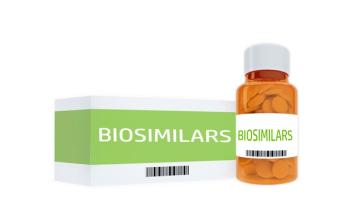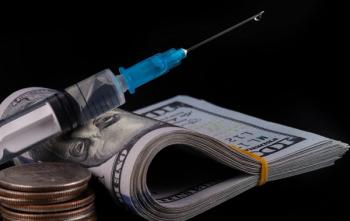Drug discount programs can come in different forms, offering patients, healthcare providers, and manufacturers various benefits and savings. Patients can often save significantly—sometimes up to 85%1—on prescription medications through various drug discount and savings programs, including manufacturer-sponsored programs, federal drug discount programs, pharmacy-specific savings plans, or prescription discount cards. This can be especially helpful if cost is a barrier to accessible treatments.
Key Takeaways
- While drug discount programs are potentially beneficial in increasing access to necessary medications, in some situations, they can offer little to no benefit to manufacturers, healthcare providers, or even patients.
- Manufacturers are losing visibility into their revenue streams.
- Healthcare providers can use tools to maintain compliance and pass savings on to patients.
However, my experience as a pharmacist makes me privy to the detrimental effects that the breakdown of these drug discount programs can have on patients. While drug discount programs are potentially beneficial in increasing access to necessary medications, in some situations, they can offer little to no benefit to manufacturers, healthcare providers, or even patients themselves whom these programs are meant to serve. It is clear that the abundance of drug discount and savings programs hasn’t delivered the effectiveness and efficiency the industry had hoped for. Because of the increased complexity of these programs, stakeholders at every level experience significant financial loss and a lack of transparency—making it difficult to track inventory and savings and pass those savings on to patients. Patients end up losing in the end as everyone tries to navigate the opaque and complex pharma ecosystem.
Manufacturers are losing visibility into their revenue streams
When it comes to complying with drug discount and savings programs, pharmaceutical manufacturers face a complex and rapidly evolving landscape, where a lack of visibility and transparency can lead to significant challenges, such as revenue leakages. The growth of drug discounts contributes to the increasing gap between the gross sales of pharmaceutical drugs and the net revenue that manufacturers actually receive after discounts and rebates, costing manufacturers billions of dollars2 in lost revenue and putting financial pressure on manufacturers, ultimately making it more difficult to maintain lower prices for healthcare providers or their patients. Without a centralized system or platform to collect and host data from the various drug discounting programs to track discounts and compliance, patients will continue to see little-to-no benefit, while manufacturers are left to manage an uncertain and opaque drug pricing environment.
Healthcare providers can use tools to maintain compliance and pass savings on to patients
Similarly, for healthcare providers, the complexity of multiple drug discount programs creates a lack of clarity and resolution when it comes to applying discounts, resulting in healthcare providers being unable to track and pass on savings to patients. Healthcare providers and manufacturers are managing and ensuring compliance with federal programs, such as the Medicaid Drug Rebate Program (MDRP) and 340B, as well as private commercial drug discount plans, which can muddy the waters and impact a healthcare provider’s ability to track every discount being applied to every patient.
Intersecting programs and ever-changing legislation, along with the complexities caused by overlaps, can make it hard for healthcare providers to keep up with compliance, especially for smaller hospitals with limited resources. For example, within the 340B Program, there is no requirement or easy way for a covered entity to report their savings. Due to the complexity of this program, there are resource constraints and a lot of administrative work that goes into reporting and tracking savings and ensuring CEs remain compliant, which takes time away from what matters most––helping patients get the medications and treatments they need at an accessible price.
Too many programs creates a detrimental overlap and lack of transparency for patients
As a pharmacist, seeing patients forgo medical treatment or choose not to fill their medications because of high costs is devastating. According to a GoodRx Research survey, 29% of Americans3 leave prescriptions for medications unfilled due to cost. Additionally, CDC research found that 9 million adults in the U.S.4 are not taking their prescription drugs as prescribed, due to the high cost of medications. In many cases, those medications are necessary to treat or manage their condition, such as heart failure or asthma. Patients facing these significant financial barriers and complexities are having to sacrifice an important part of their care because of the inefficiencies within the current pharmaceutical system and the various drug discounting programs. In other instances where individuals already have comprehensive prescription drug coverage, are on a high-cost specialty drug, or when discounts don't cover the entire prescription cost, patients can find it hard to get the necessary discounts to access their treatments and medications. Furthermore, discount cards may not be combined with insurance, potentially hindering progress towards deductible or out-of-pocket maximums. If the patients aren’t actually seeing the benefits or savings that these programs are intended to provide, then what is the point and how do we solve these critical issues?
Increasing visibility of and access to savings with advanced tech and data
While the pharmaceutical industry is actively trying to address drug pricing issues for patients to increase access to necessary medications, the process still comes with many hoops that patients, healthcare providers, and manufacturers alike must jump through. The complexity of these programs needs to be addressed with advanced tools, tech, and analytics to ensure pricing transparency and accountability throughout the pharma ecosystem - especially with new programs being introduced.
This vital transparency needed within pharma starts with increasing and supporting visibility throughout the ecosystem with increased access to data and data -driven insights. Manufacturers and healthcare providers need a centralized data platform that not only holds all drug discount information from varying programs but can also handle the complexity of each program and enable transparency and compliance. By taking this step together to improve this part of the healthcare ecosystem, passing on savings to patients can become easier than ever before. For manufacturers, providers, and patients, onerous compliance processes and a lack of data transparency into drug discounts and rebates create complexities and opaque overlap that result in noncompliance and escalate avoidable costs for every stakeholder in the process. Without a single source of centralized data for all drug discount information and insights, providers and manufacturers face the overwhelming task of collecting, sifting through, and analyzing disparate data, making it almost impossible to be efficient in passing down savings and effectively improving compliance. Manufacturers and healthcare providers can take steps toward a new age, new tech, or a new model now to better collaborate and align on incentives, enable transparency, compliance, and growth, and foster trust between stakeholders to ensure program compliance and financial relief for the patients these programs are designed to serve.
Sources
- Cross-Sectional Analysis of Out-of-Pocket Payments for Commonly Prescribed Generic Medications Versus Discount Card Pricing. ACP. September 5, 2023. https://www.acpjournals.org/doi/10.7326/M23-0644
- Four Trends That Will Pop the $250 Billion Gross-to-Net Bubble—and Transform PBMs, Market Access, and Benefit Design. Drug Channels. April 4, 2023. https://www.drugchannels.net/2023/04/four-trends-that-will-pop-250-billion.html#:~:text=OUR%20BUBBLE%20BUDDY&text=We%20estimate%20that%20in%202022,face%20competition%20from%20generic%20equivalents.
- Nearly a Third of Americans Aren’t Filling Their Prescriptions Because of High Costs. GoodRx. April 2, 2025. https://www.goodrx.com/healthcare-access/research/third-of-americans-dont-fill-prescriptions-due-to-cost
- Characteristics of Adults Aged 18–64 Who Did Not Take Medication as Prescribed to Reduce Costs: United States, 2021. CDC. https://stacks.cdc.gov/view/cdc/127680





